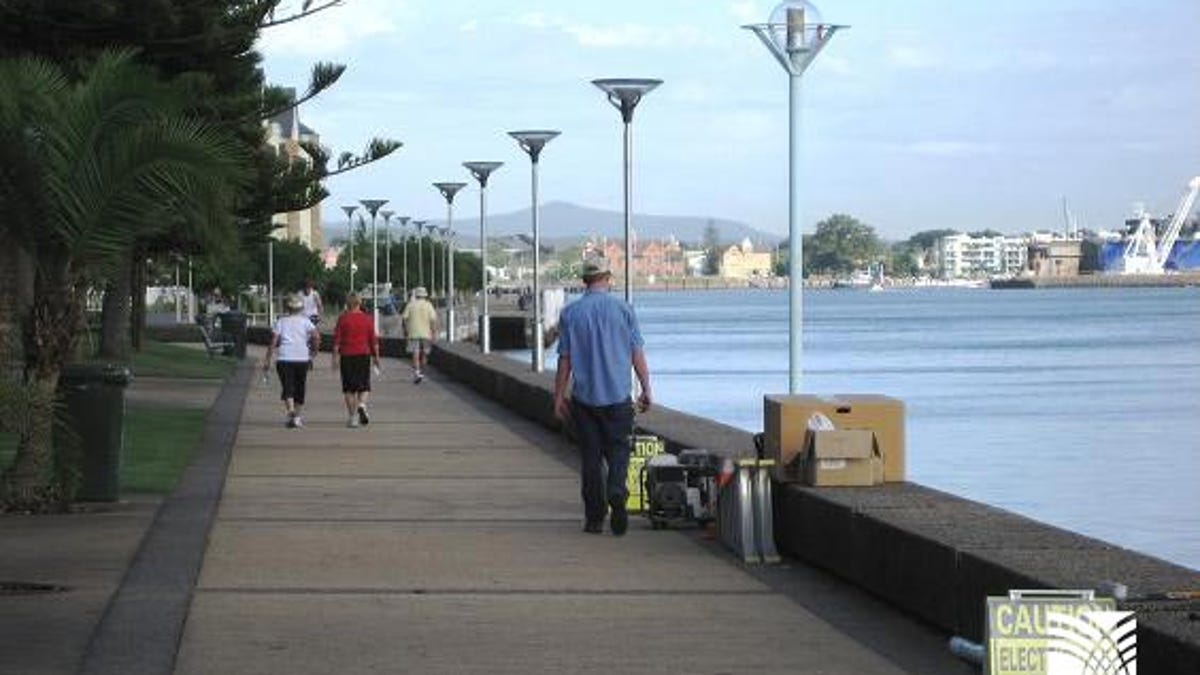Australia going smart-grid
The initial $100 million rollout, to take place "mid 2010," will include the central business district of Sydney, the city of Newcastle, and several towns.

Newcastle, in the state of New South Wales, will be the first Australian city to move onto a smart grid in what the government says could be a nationwide change.
The announcement, made Monday, is part of Australia's "Smart Grid, Smart City" initiative involving the collaboration of several Australian government ministries, private contractors including GE Energy and IBM Australia, and Energy Australia, one the country's leading electricity utilities.
The project's initial $100 million rollout, to take place "mid 2010," will include the central business district of Sydney as well as the towns of Scone, Homebush, and Ku-ring-gai, in addition to Newcastle.
A smart grid is an electric grid system with two-way communications capability that allows electric utilities, as well as the commercial and residential facilities using electricity, to regulate electricity use based on both need and electricity availability. It optimizes electricity use and attempts to prevent system strains by making users aware of electricity habits, as well as alerting appliances and monitoring tools to off-peak and peak usage hours. As a result non-urgent electricity needs can be automatically scheduled for off-peak hours, while utilities can better manage their grid systems to meet public need and avoid brown-outs.
The implementation of smart grids throughout Australia could reduce the country's carbon emissions by as much as 3.5 megatonnes (about 4 million metric tons) per year, according to Sen. Penny Wong, Australia's minister of climate change, energy efficiency and water.
"Smart grids are critical in the fight against climate change, as they have enormous potential to improve the efficiency of our electricity sector and transform the way we use energy in our homes and businesses," Wong said in a statement.
It's not surprising that Australia might be the one leading the way on implementing smart grids, since the country generally has a progressive government when it comes to the environment. Australia was the first country in the world, for example, to ban the sale of incandescent light bulbs. That ban took effect at the start of 2010.
While it's still in the early development stage, the U.S. is poised to join Australia in the smart-grid quest.
In April 2009 Vice President Joe Biden, who has taken the lead in the Obama administration's smart-grid push, announced that the U.S. Department of Energy would give $3.4 billion in smart-grid technology development grants, and $615 million for regional pilot projects. By October 2009 it was announced that 100 smart-grid projects had been approved for the $3.4 billion in funding, with an additional $4.7 billion being invested by electricity utilities. The DOE estimates that altogether the projects will include the installation of 18 million smart meters covering about 13 percent of U.S. homes.
No hard deadline for completion of the multiple projects has been announced. But California's Sacramento County announced in June 2009 that it would implement a smart grid for 600,000 residents by March 2011.

